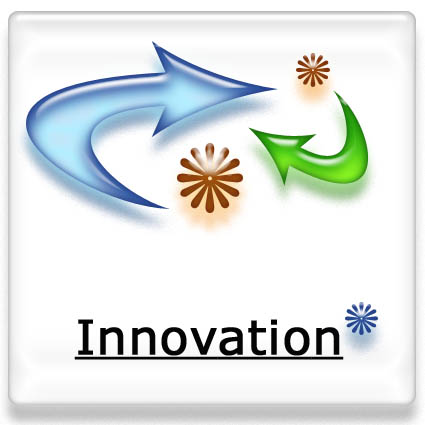Browse by Tag
- "Real" Innovation (2)
- Alignment (6)
- Business Innovation (9)
- Business Plan (2)
- Business Plans (1)
- Creativity (24)
- Critical Success Factors (4)
- Entrepreneurship (9)
- Global Competiveness (4)
- Human Side (11)
- India (1)
- Innovation (4)
- Innovation Consulting (18)
- Innovation Killers (3)
- Innovation Management (18)
- Innovation Tools (17)
- Innovation Training (24)
- Innovations (7)
- Inventions (16)
- IT Innovation (1)
- Leaders (5)
- Leadership (20)
- Leadership Development (13)
- Organizational Leadership (2)
- Organizational Strategy (20)
- Personal Values (6)
- Prediction (5)
- Strategic Innovation (38)
- strategic planning process (4)
- Strategy (3)
- Training (1)
- Vision (5)
- Weekly Dose (8)
Posts by Month
- 2014
- 2013
- 2012
- 2011
- 2010
- 2009
- 2008
- 2006
Coming to TV screens of the future: Smell-O-Vision
Researchers at UC San Diego and the Samsung Advanced Institute of Technology (SAIT) in Korea have demonstrated that it is possible to generate thousands of odors with a device small enough to fit on the back of your television.

This could make real “Smell-O-Vision” possible. “Smell-O-Vision” was a film technique that released smells during films, used for only one movie, The Smell of Mystery, released in 1960.
“For example, if people are eating pizza, the viewer smells pizza coming from a TV or cell phone,” said Sungho Jin, professor in the departments of Mechanical and Aerospace Engineering and NanoEngineering at the UC San Diego Jacobs School of Engineering. “And if a beautiful lady walks by, they smell perfume. Instantaneously generated fragrances or odors would match the scene shown on a TV or cell phone.”
The researchers found that it is possible to create a compact device which heats a small metal wire to vaporize an aqueous solution, such as ammonia or rose oil, releasing smells from a small chamber. The chamber is made of a non-toxic, non-flammable silicon elastomer.
The system uses 200 controllers to selectively activate as many as 10,000 odors. That pretty much covers the number of odors humans can distinguish, the researchers said.
Killer Question: How do we give recognition to people/teams with new fresh ideas?
Source: University of California - San Diego
How Innovative is your Organization?
You must be having certain parameters or yardsticks to judge the performance of your organization and exactly calculate the return on investment (ROI) vis-à-vis the planning, the performance and the potential. Despite all the available mechanisms of analysis, most leaders fail to understand the immeasurable gap between speculations and reality. The root cause of this immeasurable gap can certainly be tracked down to a few intangible factors. Primary among them is the capacity to innovate for a particular brand, organization or a corporate entity.
Innovation Obstacles
The major problem faced by an organization is the absence of a clear directive or formula to innovate. The work force, which is a major decider of innovation, largely works as a cog in the machine rather than a radical unit intelligent enough to innovate as hierarchical processes are better preferred by a linear human resource.
Another area which makes innovation a difficult process to be imbibed by your workforce is lack of liberty to express in a highly structured system. Whenever there is lack of liberty at an individual level, an organization fails to innovate on the whole. More structured-driven the culture, harder it is to embrace innovation; which by its nature, is somewhat unstructured.
Organizational culture is a result of inherited and tolerated past behaviors of the staff; especially the leaders at the top. Organization suffers from lack of innovation due to contemporary business practices and the nearby environment it operates in. Thus, innovation as a process should begin at the level of an individual with full support of the leaders. This can lend a character to an organization where performance, profit and potential grow manifold by significant innovation on intangible, impromptu research, and management decisions.

How ready is the culture for innovation?
How adept your workforce is with a dynamic knowledge system or how porous they are with circumstance fluctuation are simple questions which help you to approximately understand how innovative your organization is. However, to ensure that your organization is ready for such innovation trials you need to first make sure that your organization is innovation-ready.
At The DeSai Group, our innovation consulting processes are deliberate and drastic. They are designed to be transformative in nature. We believe in a sustained innovation strategy instead of piecemeal innovation. This means that our consulting techniques rely heavily on a dramatic change to completely undermine forces of resistance and new growth opportunities. As necessity is the mother of invention, we facilitate an environment in your organization where necessity is induced to alter psychological performance and create a climate of innovation. The process makes your workforce rehearse find measures of self-innovation. This means there are real entrepreneurs working on their passions in an environment that promotes experimentation, risk-taking, and future thinking.
The right brand image within insiders of an organization is a necessary precondition for any kind of innovation. If a nagging employee has a negative attitude toward the organization’s optimism the result is not only affecting the performance of the concerned individual but the overall environment as well. Such individuals can be motivated through vigorous team-building and venturing skills.
The process of innovation is largely a psycho-social process wherein knowledge transfer and experiential methods are largely employed to achieve the goal. We, here at The DeSai Group, clinically approach the intangibility quotient of innovation through hard-core rational, analytical science we call “Innovation Execution Methodology”, while keeping in mind that innovation is also very much a form of art and it is the artistic and unpredictability that actually gives rise to new ideas for commercialization and value generation.
Nine Excellent Ways To Stifle Innovation
Innovation doesn't just happen…it comes from awesome intrapreneurial teams. Are you or your company guilty of killing good ideas?
Yes, everyone at the top is interested in innovation. It has become a business mandate in many organizations. But are the leaders serious? We find that plenty of companies are not walking the talk. They want innovation, but also don’t want to recalibrate the organizational systems. These systems are where a good idea has as much opportunity to succeed as me going to the moon. Why so?
For starters, organizations do not have an internal muscle for a creative process. The creative process is not well understood and it is truly a fragile process. This situation promotes uncertainty; something most leaders do not want to spend time on. Additionally, there are very few internal experts who can support it and nurture it like there are for project management processes, customer service processes, budgeting processes, etc. This is very tough in today’s short-term focus surrounded by the fear-inducing environment of rapid technological change and dynamic markets—but this also makes innovation essential.
So what to do? First, kill the innovation killers. Here is our list of innovation killers that will need significant moderation if not surgical removal. You can discover for yourself if you have an environment that is crushing good ideas or allowing growth and change to be welcomed.
- Clear(?) and cumbersome approval processes, rules, regulations for every action at every level within the organization. Making decisions takes forever and when they are made, they take forever to implement. Too much process everywhere.
- Silos are promoted. The organization loves to allow departments and individuals to compete against one another for resources and protect their areas.
- The truth is one-sided the truth comes mostly in the form of criticism without praise. The glass is always half-empty. The focus is so much on execution, that the culture often forgets the impact on human spirit.
- Don’t trust new ideas. All ideas are evaluated with great suspicion and ‘yes, but’. When someone contributes a new idea, the first thing someone says is ‘yes but…’ followed by ‘not sure if we can do that, or we have never done that before, or management will not approve it, etc.’ Moving away from the status quo is very difficult and not often welcomed.
- Control and calibrate everything. The organization is very systematic, dashboard driven, precise, and project managed. Although all of that is very essential, the system does not allow for any quick experimentation of new ideas or technologies with spontaneity. Missing target goals is frowned upon more than the lessons gathered through failure.
- Organization is very secretive. Restructuring, product launches, competitive news, and executive changes all occur in a secretive manner. Leaders believe that “the less people know, the better they can stay focused on the day-to-day job.” The firm does not like to share bad news with employees until the last minute.
- Promote class-based relationships. There are seniors and inferiors. Seniority and tenure are heavily used to promote fear-based execution. The culture perpetuates the idea that seniors know everything and they should get the best of everything. The higher you are up in the ladder, the more you are allowed to look down at others. Unpleasant duties can be delegated to inferiors.
- The pyramid is inverted. The higher-ups know everything important about the business, and the bottom does not need to know how the business should be conducted; as long as they do what they are trained to do.
- Leadership is invisible. Leaders are not able to connect to employees. Employees do not have confidence in the leaders based on their action and those of the top management team.

